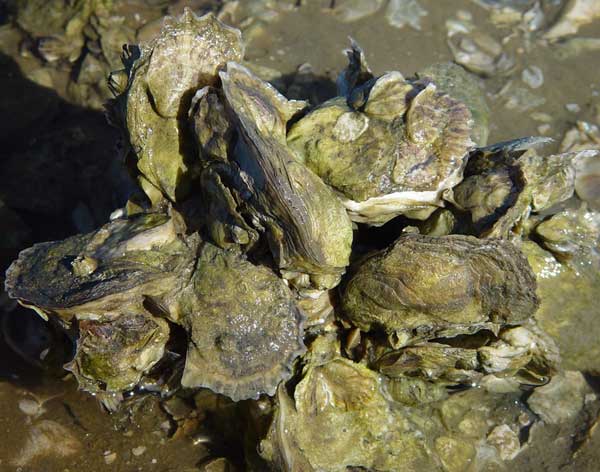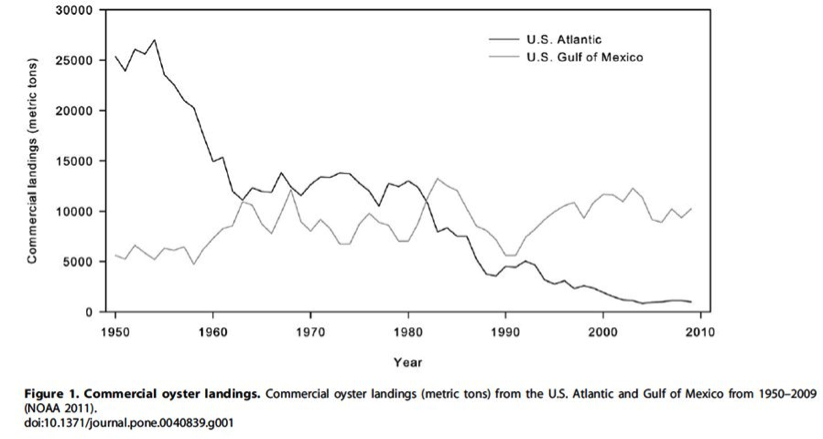Oyster reef habitats provide young, free-floating larval oysters with a substrate to settle on, protection of young mollusk, crab, and fish species, and water filtration. Oyster prevent algal blooms by filter feed on algae that can reduce the water quality and also inadvertently remove pollutants and other matter that may be harmful to estuarine health. Estuaries that experience excess nutrient loading can have algae populations explode in the upper water column until little nutrients are left and the population then crashes, leaving decaying organic matter in the water and creating hypoxic condition. Hypoxic conditions indicate an unhealthy estuarine system and are characterized by low oxygen levels and low visibility. Oyster reefs provide a means of preventing algal blooms, insurance of future oyster generations, and protection of many organisms.

Today, only an estimated 15% of oyster reefs remain worldwide, making them among the most threatened marine habitats (Pollack 2012). Oyster reef habitats are constantly at risk of being destroyed or removed from anthropogenic activities, water quality degradation, climatic events, and pollution events (Pollack 2012). Oyster reef restoration and protection efforts in the Gulf may provide a way to bring back the oyster reef habitats. The figure below shows oyster removals for anthropogenic use along the Atlantic and the Gulf coast are still occurring, showing oyster populations in these waters are still present.

Oyster sentinel monitors the health of estuaries in the Gulf by conducting studies using eastern oysters.